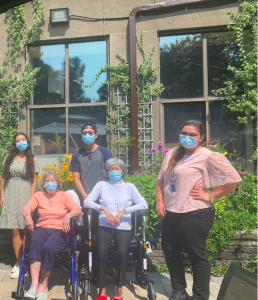The Teri Project



This initiative aims to address social isolation amongst residents of long-term care (LTC) homes by building intergenerational friendships with university students. The students participate as a part of their undergraduate internships from the fields of Nursing, Social Work and Child and Youth Care programs. The older residents and students are connected to build one-on-one friendships through weekly visits, consistent communication, and fun, meaningful conversations. This program has involved collaboration between Toronto Metropolitan University, 8 LTC homes, and 100 participants to date.
This initiative emphasizes that meaningful connections are needed in combatting social isolation. The connections here are built on mutual empathetic and caring relationships where all parties feel cared for, included, and can have fun.
While the older participants live in close quarters with many others, the residents participate because they have few meaningful social connections which normally contributes to loneliness, social isolation, and depression. Many residents have dementia, mobility challenges, and language barriers that put them at further risk for social isolation. The students meet with residents to emotionally and empathetically connect in order to build a meaningful bond. The pairs also engage in art and storytelling to enhance this connection.
Website: https://www.torontomu.ca/fcs/socialinnovation/the-teri-project/
Main target group: Both younger and older people (i.e. intergenerational)
Other target group(s): Residents of long-term care homes, individuals with Dementia, mental health (social isolation/depression)
Sector(s): Long-term care
Other sector(s): Intergenerational, mental health
Desired outcome for older people:
Build and maintain relationships
Name: Cicchelli, Taryn
Email address: taryn.cicchelli@torontomu.ca
Preferred language(s): English